When it comes to teaching our youngest students numbers we often focus on counting. Counting involves memorizing the number words in the proper order (one, two, three, four, five…). Many young children easily memorize the number words in their proper order, but often do not understand the concept of one-to-one correspondence.
ONE-TO-ONE CORRESPONDENCE is being able to skillfully count an actual number of objects. A child that understands one-to-one correspondence knows that 2 cookies = 2 or that 5 raisins = 5. Our students need many opportunities to practice saying one number with one object.
Here is GREAT way to begin next school year with 1:1 correspondence: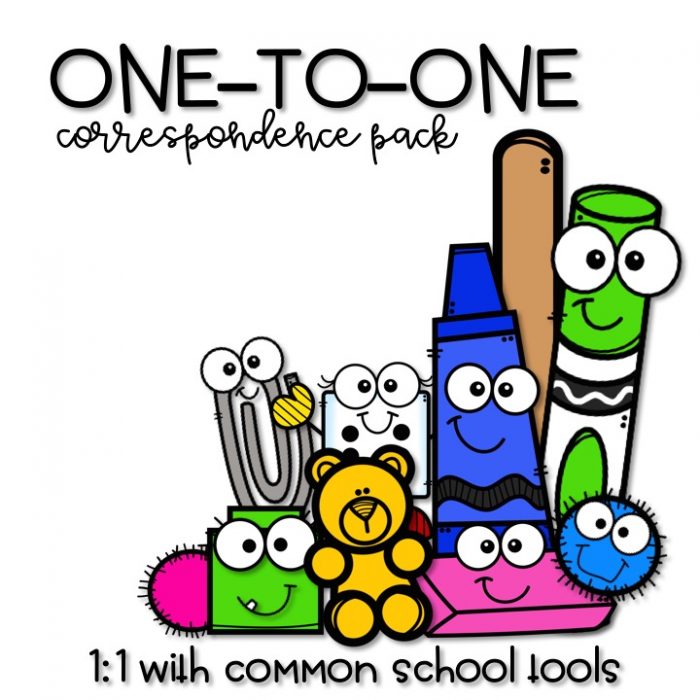 This 220-page ONE-TO-ONE CORRESPONDENCE ACTIVITY PACK can be used with tools already in your classroom to build 1:1 correspondence in your students!
This 220-page ONE-TO-ONE CORRESPONDENCE ACTIVITY PACK can be used with tools already in your classroom to build 1:1 correspondence in your students!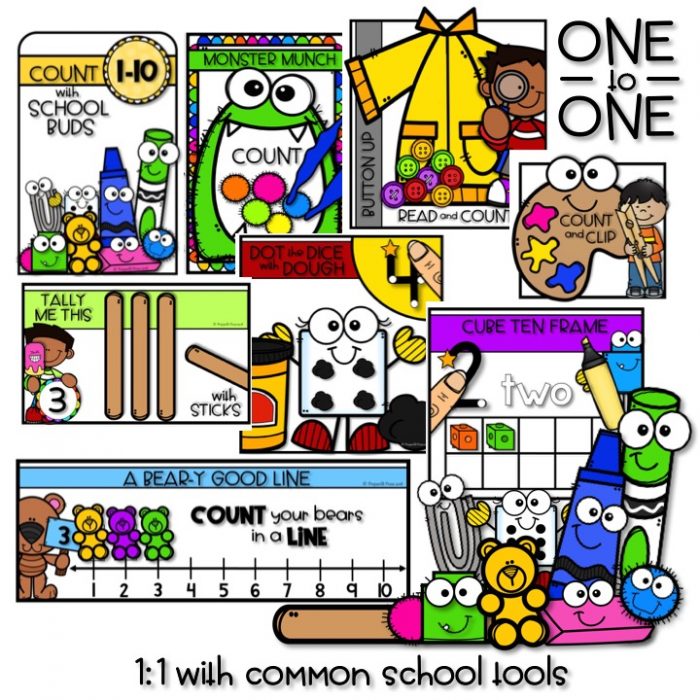 All of the activities in this pack include mats and booklets WITH prompts, for your newest number learners or students that need additional practice, and WITHOUT prompts (so you can assess your students’ learning).
All of the activities in this pack include mats and booklets WITH prompts, for your newest number learners or students that need additional practice, and WITHOUT prompts (so you can assess your students’ learning). 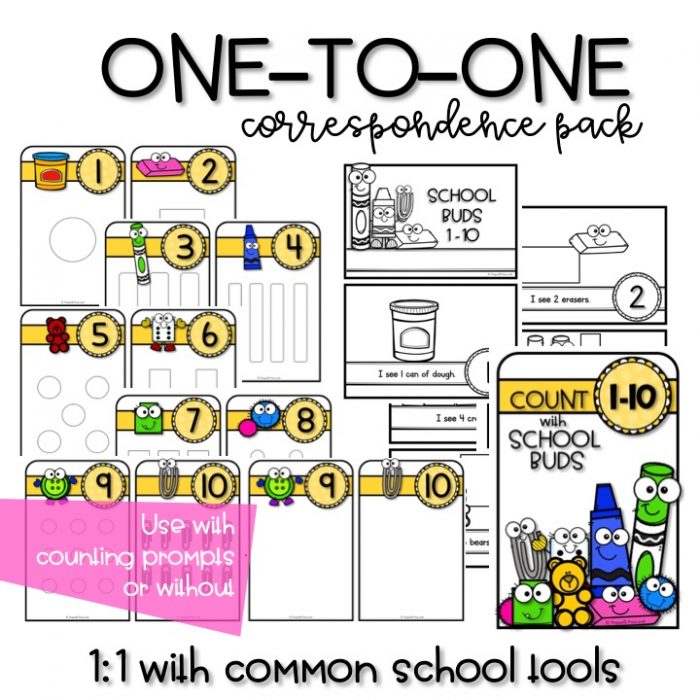
In this first activity, your students will count with Play-Doh containers, erasers, markers, crayons, counting bears, dice, math cubes, pom-poms, buttons and paperclips. The School Buds 1-10 booklet includes numbers and shapes to glue on the pages–matching the number and completing the count.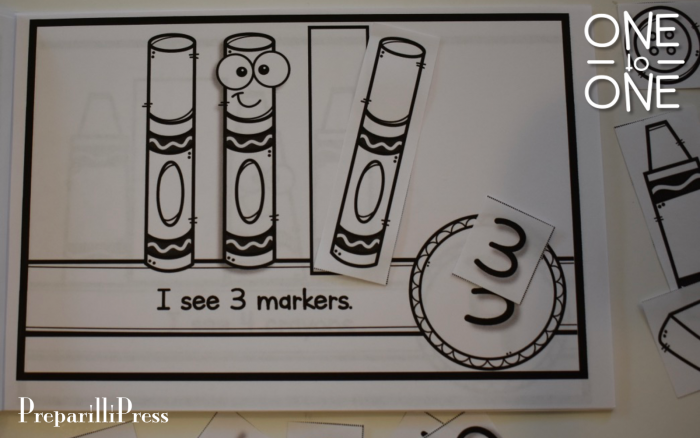
The “I Can Count What I See” sheets can be used as additional task cards, or stapled together into booklets. They use some of the same manipulatives as the previous set, or ones that your students can find at home (scissors, Q-tips, elbow macaroni, Cheerios, Goldfish and small puzzle pieces).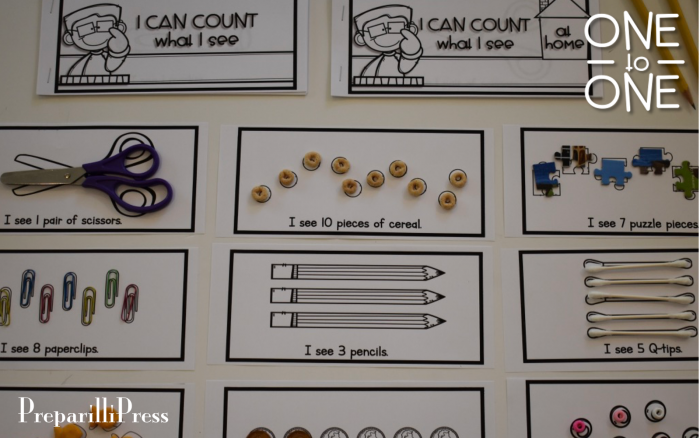
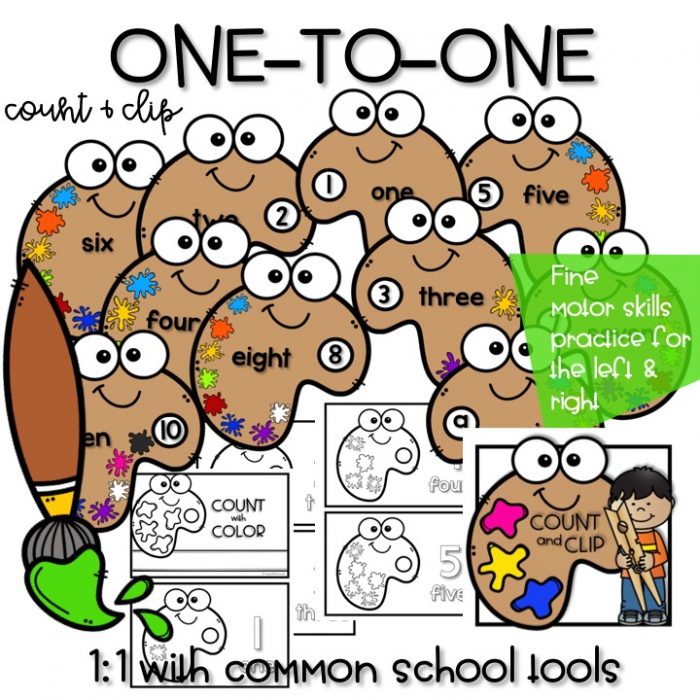
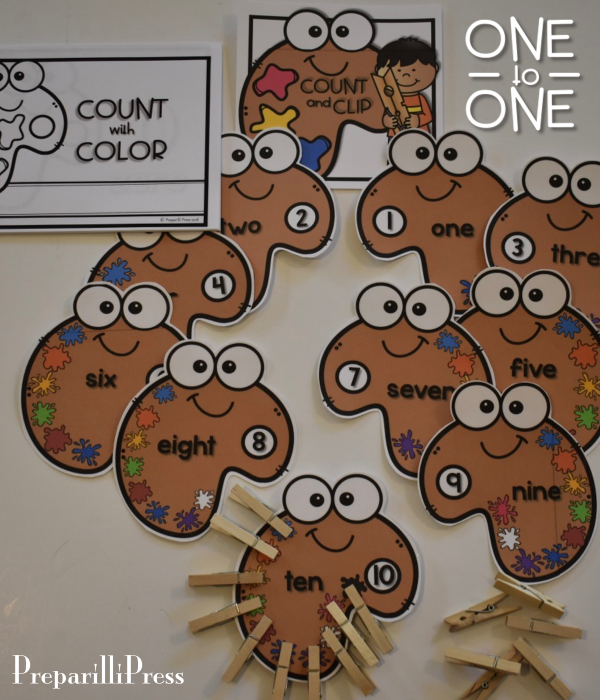
Another fun way to count (and great for fine motor skills) is to clip what you count. With these color palettes, your students will be challenged to use the clips with both of their hands.
The Count and Color booklet, like all of the other ones you will see in this post, can be completed with dot markers and crayons. Or you can use these sheets as additional task cards and your students can count with Play-Doh, clothespins, push pins, hole punchers, moon sand, regular sand, finger paint or even edible counters (yum!). The possibilities are endless! The more your students practice, the better they will get at 1:1, number recognition, and counting.
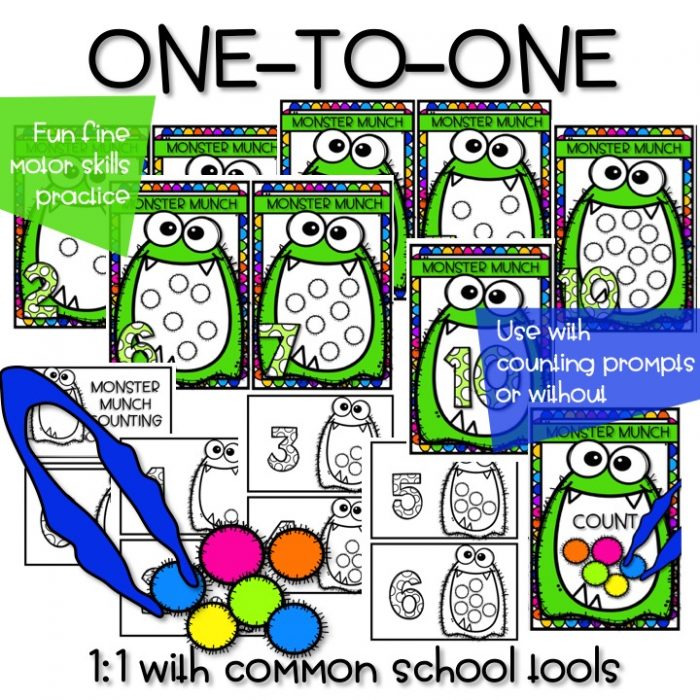
Here is another great way to incorporate fine motor skills into your 1:1 correspondence lesson–plastic tweezers! 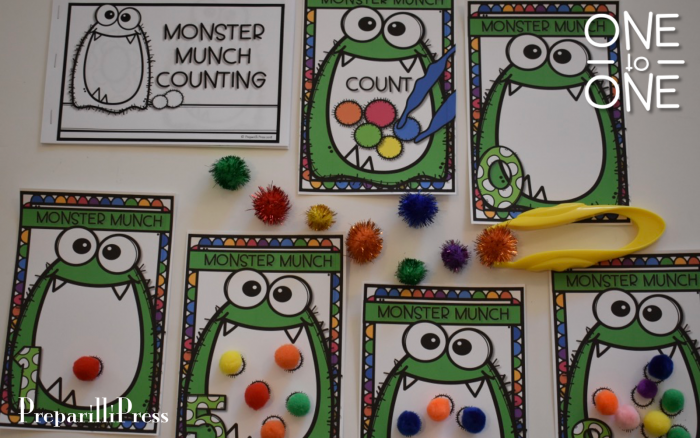
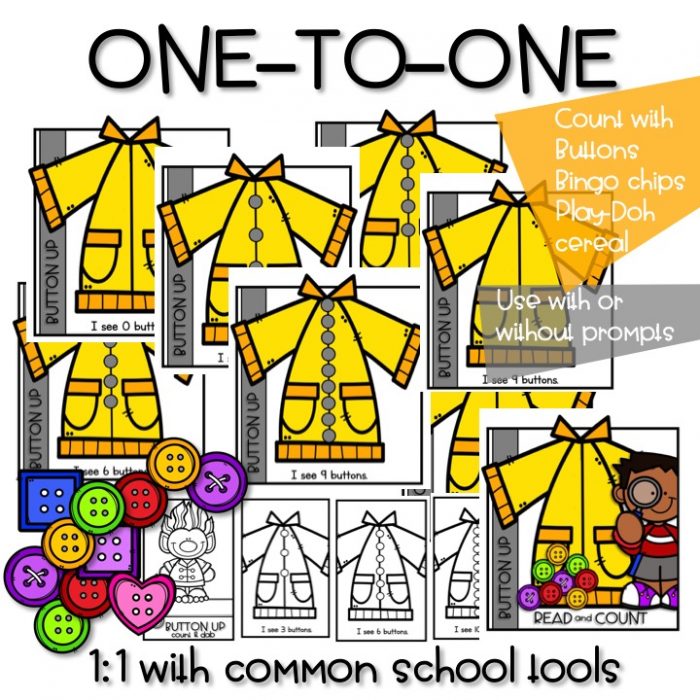
And, I love this Button Up activity. You don’t just have to use buttons, either!
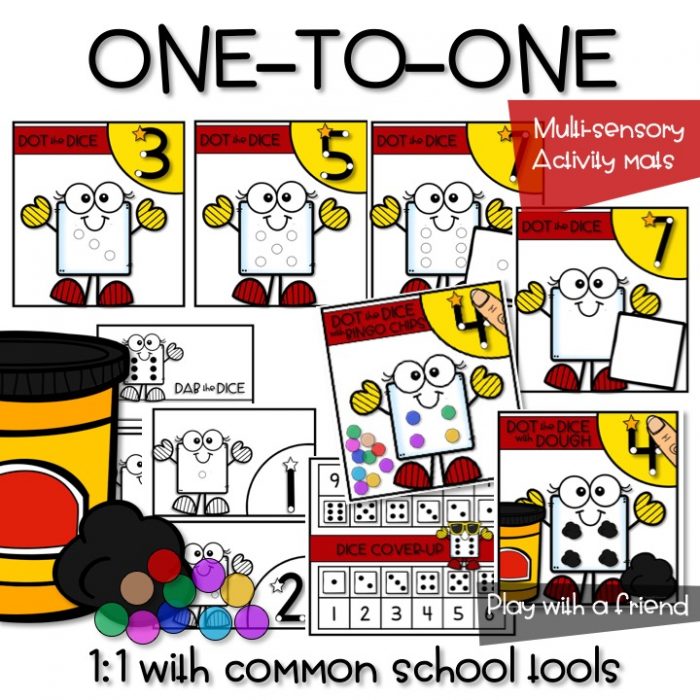
These multi-sensory mats are great for instructing correct number formation along with the 1:1 relationship. And, what child doesn’t love Play-Doh? (If you have one, just use bingo chips :)!
To form the numbers, have your students place their pointer finger on the star and talk them through the number formation. For the Number 4 I would say, “Start at the top on the star. Short line down. Stop. Straight line over. Stop. Now jump up and make a big, straight line down. Stop.”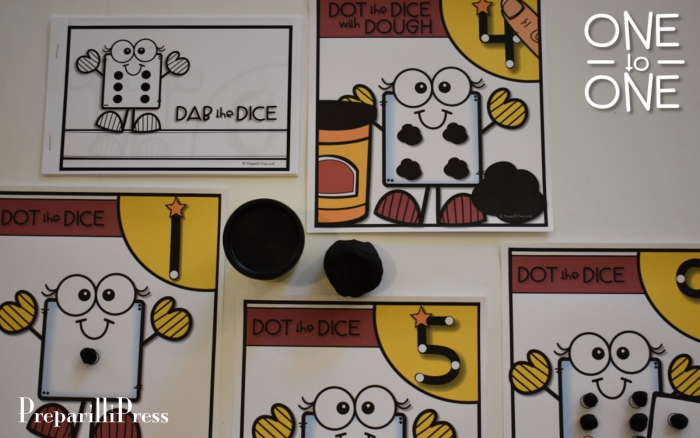
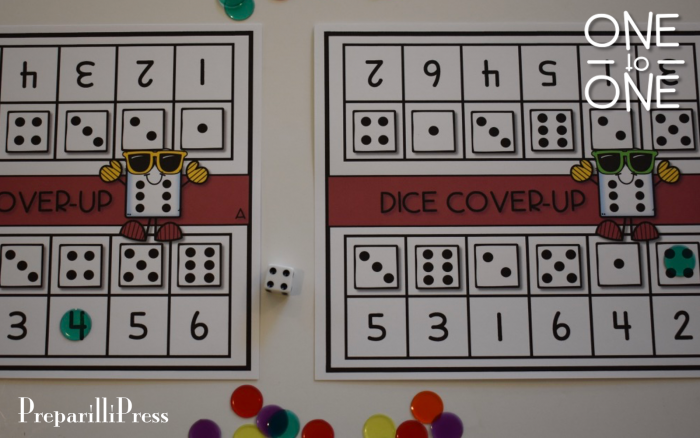
With a die and a partner, your students can play DICE COVER-UP. They will roll the die and cover the die face they rolled, or its number. First one to cover all of the spots on their game board wins! Two boards are included–one that is in numeric order, and one that is not.
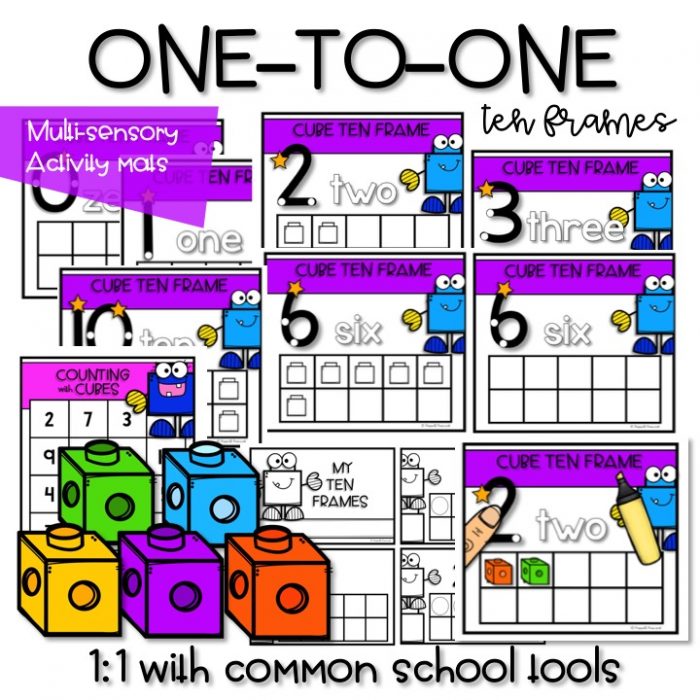
With this multi-sensory activity, your students can build ten-frames, practice correct number formation and “write” the number word. 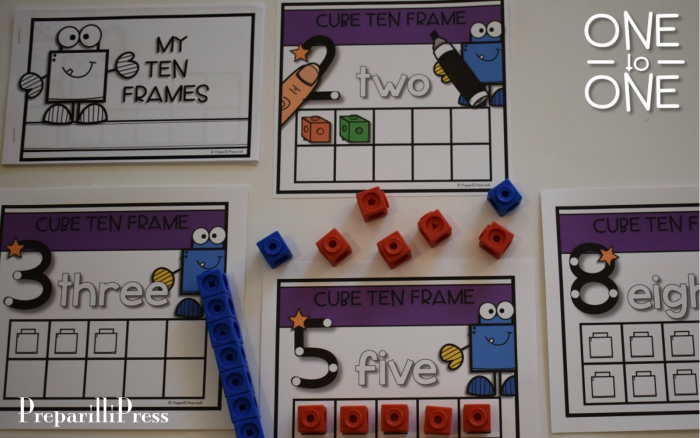
Count and stack the math cubes on the Counting with Cubes mat. 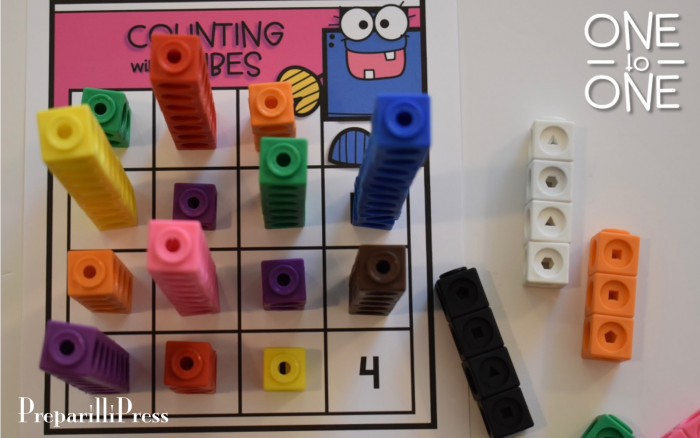
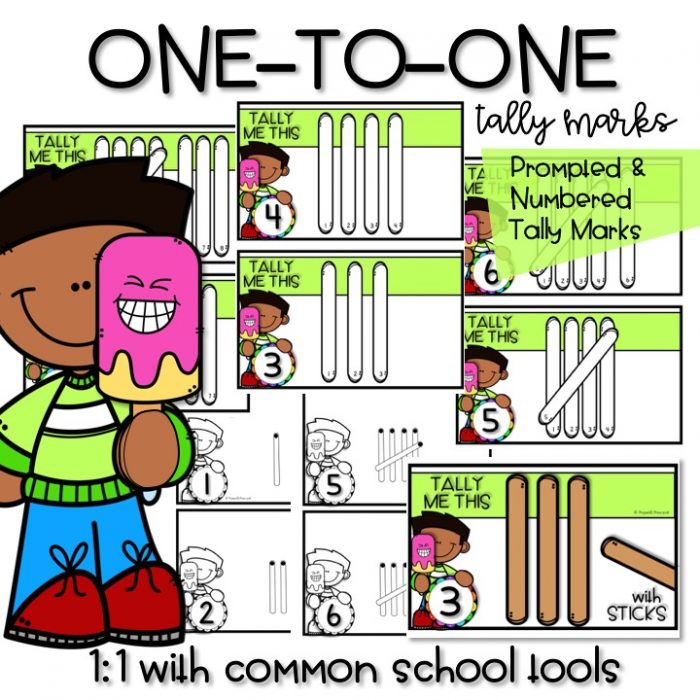
Teach tally marks with Popsicle sticks. The prompts on the Tally Me This mats are numbered to help your students learn to tally from left to write and slash for 5.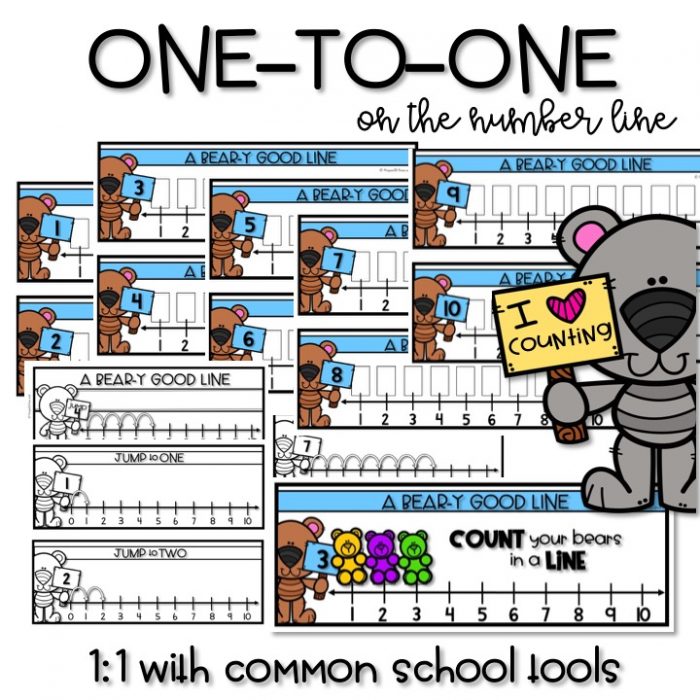 Finally, teach 1:1 correspondence using a Bear-y Good Line (and counting bears).
Finally, teach 1:1 correspondence using a Bear-y Good Line (and counting bears).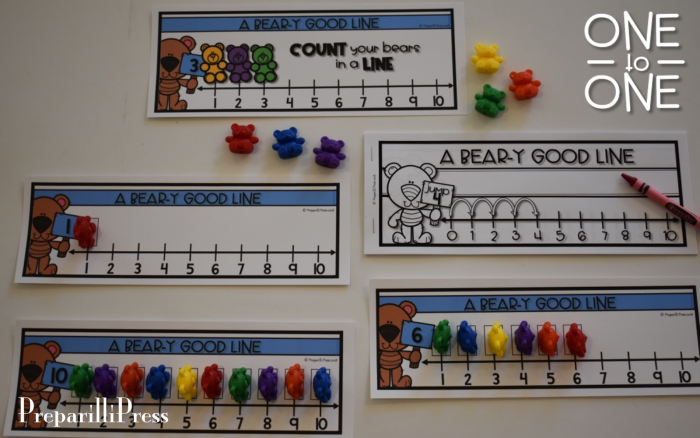
You’ve gotta get this set! Your students are going to LOVE math. So, go grab it for 1/2 off today (here)!
